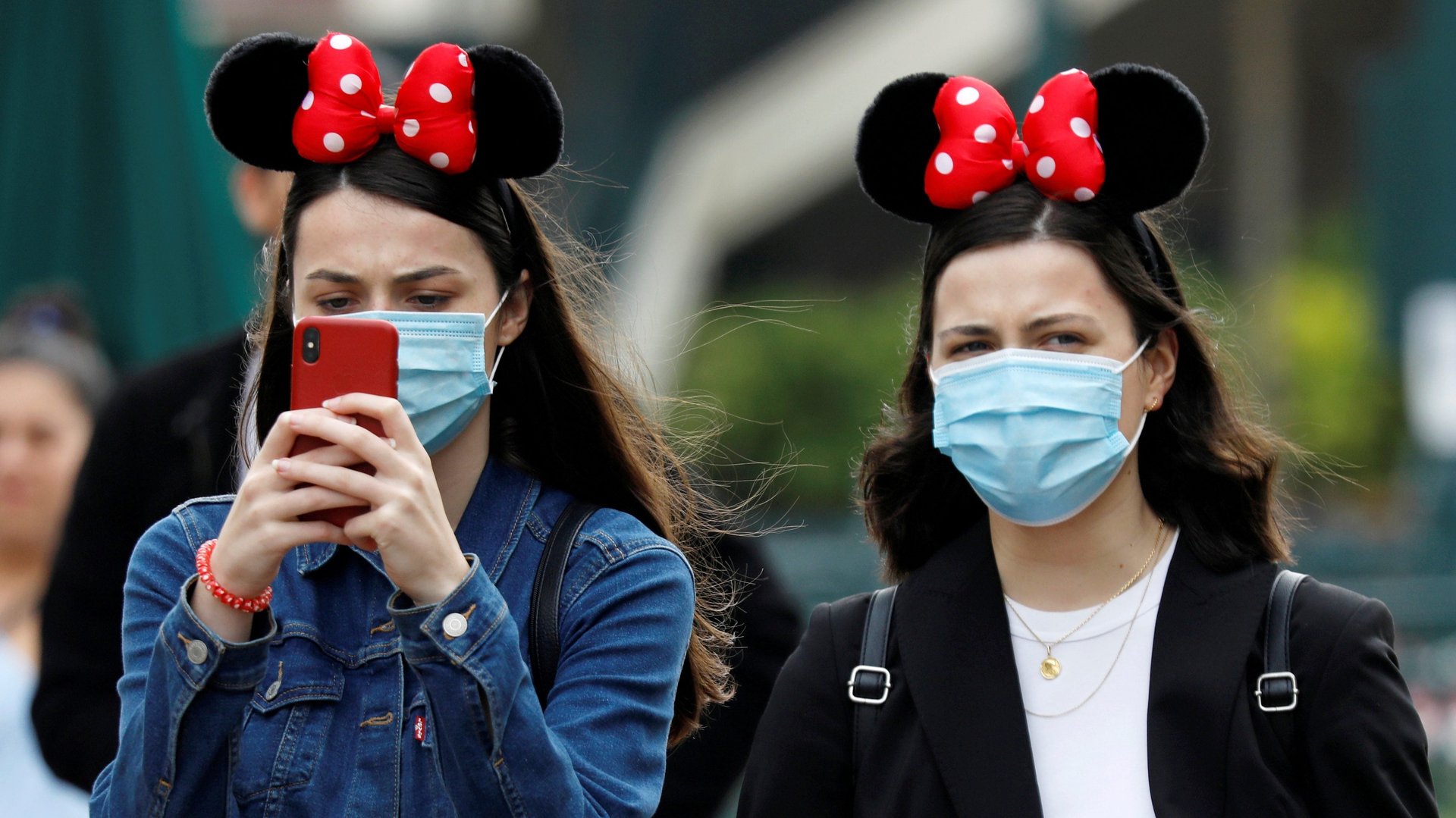As rivals embrace the metaverse, Disney is banking on its brick-and-mortar parks
When the theme park universe was turned on its head in 2020 due to covid-19, some wondered if the in-person entertainment segment of Disney might ever recover. Now, more than a year later, with vaccines widespread and cases on the downswing in the US, Disney’s parks are rebounding nicely, with revenue up nearly 400% (pdf) from a year ago.


When the theme park universe was turned on its head in 2020 due to covid-19, some wondered if the in-person entertainment segment of Disney might ever recover. Now, more than a year later, with vaccines widespread and cases on the downswing in the US, Disney’s parks are rebounding nicely, with revenue up nearly 400% (pdf) from a year ago.
In fact, they’re doing so well the company raised entry prices this week from 3% to 8% across the board to account for the renewed activity. Also, a newly created “tier 6” one-day pass is now $164 for an adult, which covers the most popular visitor days of the year, such as holidays and weekends. The cadence of the new price announcements aren’t a shock to long-time Disney parks visitors, but since the parks already raised prices in February 2020, just before they were forced to shut down, the new pricing seems to reflect an aggressive outlook from Disney about the demand for in-person entertainment in the coming months.
That bullish approach may accurately reflect a gradual shift in the US back to location-based entertainment, but it nevertheless flies in the face of the recent trend among entertainment and media companies toward metaverse strategies that focus on virtual, location-agnostic experiences. For example, Facebook’s growing VR enterprise, which just added the Resident Evil franchise to the menu, and Google, which is using augmented reality to enhance its search and maps products.
None of this virtual action seems to be phasing Disney, however, which still managed to win the pandemic with its Disney+ streaming service launching just before the pandemic and growing faster than all projections, as well as a successful hybrid approach to theatrical releases like Black Widow.
Since Disney’s parks and experiences segment, which includes cruises and tours, accounted for $26.2 billion of the company’s $70 billion revenue in 2019, Disney can’t afford to ignore the roughly 40% share of total revenue its parks brings in. So does this mean that Disney will be left behind as the rest of the content titans embrace the new dynamics of the metaverse? Not quite.
Disney’s approach to building the metaverse is more marketing than next-gen virtual
In September Disney announced an evolution of its Magicband called the Magicband+. The current wristband allows Disney Parks visitors to use the band to enter hotel rooms, charge their accounts for food and services, and enter various theme park experiences. The new Magicband Plus, set for release in 2022, will provide wearers with haptic feedback, gesture recognition, and LED light indicators, all designed to make the real-world environments in the theme parks seem more immersive. This is, for now, Disney’s version of the metaverse: It harnesses not only the classic characters and storylines of Disney but also lets you physically embrace the company’s many fantasy narratives.
“We seamlessly bring together the physical and digital elements in the experience to create what I call converged experiences by using technologies like computer vision, natural language understanding, augmented reality, and artificial intelligence,” Tilak Mandadi, Disney Parks former chief technology officer, said during a presentation in December.
While Disney’s wristbands can’t deliver the digital immersion some companies are promising, the company will likely take its cues from some of the entrenched tech players already making real inroads building true metaverse experiences. Not to mention the fact that Disney’s parks can serve as a beta test for designing smart cities, which will be valuable to an entirely different set of players. But even Disney understands that its near-term Disney Parks “metaverse” play isn’t the future many in the virtual reality, augmented reality, and blockchain worlds are talking about.
“We fully expect sooner than later the metaverse experiences will be attractions on their own,” Mandadi said.